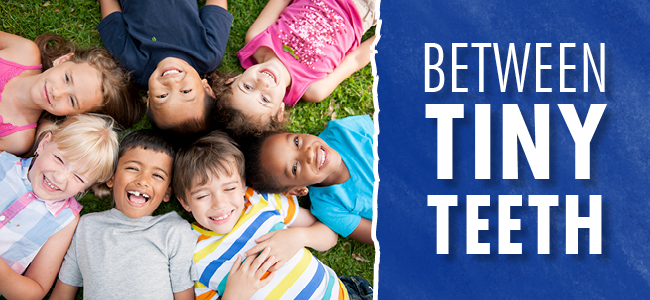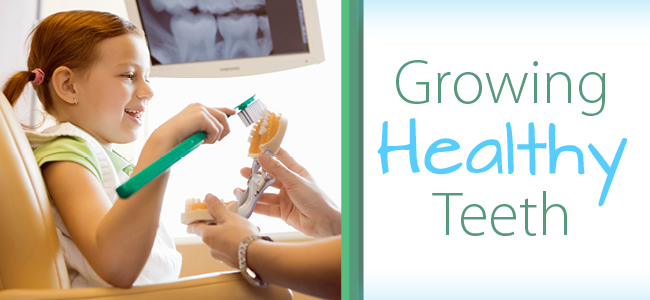
You hear advice everywhere you go. Brush and floss daily. Use mouthwash to fight bad breath. One out of every four dentists recommends using a Waterpik.
Dental health is very important, and as a consumer, there are a ton of options to pick from. To help make your dental hygiene routine easier, we’re going to cut through the noise with some simple suggestions about what a good routine looks like and what products you should consider using.
The Basics
We’ve mentioned this before—and so did your mom—you need to brush and floss daily. (In this case, she’s right.) However, you might not realize that to brush most effectively, timing matters! You should always brush your teeth before you eat breakfast. As you sleep, your salivary glands don’t produce as much saliva, enabling bacteria to grow and thrive. If you eat before brushing, more acid will be produced because of the overnight bacterial growth.
Not everyone can fit brushing in first thing every morning. If you do decide to brush afterwards, try to wait at least 30 to 60 minutes, especially if you consume foods that contain citric acid (foods like orange juice, grapefruit, lemons, etc.). The citric acid weakens your enamel and brushing your teeth afterwards can be more damaging than beneficial.
You only need to floss once a day. It doesn’t matter what time you floss, as long as you are doing it. If flossing requires too much dexterity, or you simply don’t like it, there are other options—but we’re not saying to give it up. If you can’t or just won’t floss, try alternatives like interdental brushes or floss picks.
Go Above and Beyond
Once you’ve mastered the basics of brushing and flossing, there are additional things you can do to make sure you have a clean, healthy mouth. Number one: mouthwash. Swish a little around your mouth and you instantly feel refreshed. But mouthwash can be more than just a mid-day pick-me-up, and different types of mouthwash have different benefits.
Fluoride: This mouthwash provides an additional source of fluoride. If you use toothpaste and drink tap water containing fluoride, you probably get enough. However, your dentist may suggest using fluoride mouthwash if they see some troubled spots.
Antiseptic: More commonly used, antiseptic mouthwash (like Listerine) kills bacteria. This will help with bad breath and the prevention of gingivitis.
Another tool you can use is the Waterpik. The Waterpik shoots a small, high powered stream of water that you can use along your gumline and in between your teeth. It can be useful if you have pockets or wider gaps between your teeth. While the Waterpik is a great tool, it still isn’t a substitute for flossing.
Note: If you have braces or other fixed items in your mouth, the Waterpik is especially valuable. Braces and fixed items can trap food next to your teeth for hours after eating, giving the bacteria in plaque a feast. After eating, use the Waterpik to clean out food that is stuck in your mouth. The Waterpik is also a great option for those who need to brush but may have just had citric acid in their meal.
Since the dental market is enormous, new products and methods will always be emerging. Always do proper research before buying an item or switching your routine. A good rule of thumb to follow is to see if the product is endorsed by the American Dental Association.
Remember, the best routine is the one you’re able to follow consistently. Routines will always be different depending on the person, so please don’t hesitate to reach out to Douglas B. Weber, DDS for more information on a routine that works for you.
More
By admin
15 Jun, 2016
Dental Health, Dental Tips, General Dentistry, General Health, Lifestyle, Oral Health
brushing, children's dentistry, flossing, oral hygiene, pediatric dentistry

Even though baby’s first teeth are temporary, getting an early start on excellent dental hygiene practices, including both brushing and flossing, is essential to a lifetime of good oral health. Dental decay is one of the most common childhood diseases. According to the Centers for Disease Control and Prevention (CDC), 42% of children ages 2 to 11 have had cavities in baby teeth, and 21% of those ages 6 to 11 have had cavities in permanent teeth.
Tooth decay not only poses a threat to tiny teeth, it can negatively affect a child’s whole health, as well as how they feel about themselves. One of the longest-lasting benefits of a healthy smile during childhood is the foundation for a healthy self-image.
Start Early
Brushing
You should begin cleaning a baby’s gums after each feeding with gauze or a soft cloth starting immediately after birth. As soon as the baby teeth begin to erupt, you can use a soft-bristled child’s toothbrush to clean your toddler’s teeth. Continue brushing for them until they have the dexterity to take over (approximately around 6 years old).
Flossing
Flossing is difficult for small, untrained hands. Your child doesn’t have to begin brushing right away, but once their tooth surfaces are almost touching, plaque and food begin to settle in between teeth, which can lead to gum disease and tooth decay. At this point, they should begin learning to floss and doing so at least once a day.
Teaching your child to floss can be tricky. The following steps will help you get them off to an easy start.
- Choose soft, flavored floss that’s gentle on your child’s gums and tastes good.
- Measure out a length of floss that runs from your fingers to your elbow.
- Wrap the floss around your child’s fingers as you would your own when flossing, but make sure it isn’t so tight that it cuts off circulation or causes any discomfort.
- Gently guide your children’s fingers, and show them how to glide the floss between the teeth.
- Show them how to make the floss into a C shape and curve it carefully beneath the gum line.
- Make sure they shift the floss to the next finger between each tooth so that they use fresh floss in each space.
At first flossing may be difficult and even frustrating for your little one. They may not like wrapping the string around their fingers, or they may just find changing the wrap of the floss too difficult. Fortunately, there are a wide variety of child-friendly floss sticks available in different colors and flavors. They come in packs of 50 to 100, giving your little one room for error. Make sure they dispose of each floss stick after use.
If your child is having an extra difficult time learning to floss, or if they have braces, consider trying the Waterpik Water Flosser for Kids. It’s made with a simple design that makes flossing easy for children over the age of 6. It is child safe and designed for small hands, so that your child’s frustration will be alleviated and their teeth will get cleaned properly.
As your children develop, they will be able to execute flossing with ease and can decide whether to continue using their flossing stick or a Waterpik, or whether to take the more traditional route.
For more information and help educating your child on the importance of their oral hygiene practices, call us today. We prepare you with information and instructions on how to clean your child’s teeth, as well as how to teach your child to clean their own teeth — or we can teach them with you.
More

Few parents realize that their children are at risk for tooth decay from the moment the first tooth appears (around 6 months). Even though baby teeth are temporary, they are important; they serve as placeholders for adult teeth, and if they are lost too early, their adult replacements may grow in too early and affect the position of permanent teeth that come in later. Tooth decay and damage can also lead to issues with speech development that require therapy for correction later in life.
Pediatric dental disease is the number-one chronic childhood illness, and it continues to plague children throughout the course of their development and into their adult years — but it doesn’t have to. Teaching children good dental habits at an early age and making sure they attend routine dental visits goes a long way toward helping them maintain a pain-free, healthy, and beautiful smile for a lifetime.
The following information functions as a road map for understanding your children’s oral development and health throughout their ages and stages.
Birth to 1 Year
You should be caring for your baby’s teeth before they even appear. Infant toothbrushes come in a variety of sizes and shapes. Most are made out of a soft BPA-, lead- and phthalate-free silicone and have tiny bristles parents can use to gently brush gums after each feeding. Once your baby is old enough to sit and hold objects, there are similar brushes that resemble teething rings, which babies can hold and massage their own gums with.
Your child should have his or her first dental exam by the time they are 1 year old.
When Baby’s First Tooth Appears
As soon as baby’s first tooth appears, you should begin brushing with the infant toothbrush and water twice a day. Sugars are detrimental to teeth, and too much can quickly lead to tooth decay. Try to limit your child’s juice intake to one cup a day. Also, be aware of your child’s sucking behaviors and habits. If your baby sucks his or her thumb, finger, or pacifier, now is a good time to start planning out how you will break the habit. Regular sucking can negatively affect your child’s bite.
Your pediatrician will inspect your child’s teeth at each well-child exam and will refer you to a dentist should any concerns arise. You should consult with your pediatrician about fluoride, sealants, and additional ways you can support your child in the development of excellent oral hygiene habits.
2 Years
By the time your child is 2 and a half, they should have all of their baby teeth. At the age of 2, your child is ready to start learning how to brush their own teeth two times a day. Soft-bristled, child-size toothbrushes are available and make reaching difficult spots easier for uncoordinated little hands. At this age, your child can use a pea-size amount of toothpaste with fluoride. Allow them to brush their own teeth for a couple of minutes, then finish by taking the brush and making sure every tooth has been gently scrubbed. Once you are finished, have your child spit the remaining toothpaste into the sink.
Tips for Avoiding Toddler Tooth Decay
- Avoid sugary snacks and drinks.
- If your child needs milk or formula before bedtime, make sure to rinse their mouth out prior to laying them down.
- If your child requires a bottle at bedtime, fill it with water.
6 Years and Beyond
Your child will start losing their primary teeth around 6 years. They will continue to lose primary teeth and gain most of their permanent teeth until around the age of 13, when they should have 28 permanent teeth. If there is enough room, their final teeth — the wisdom teeth — will erupt around the age of 17. If your child’s dentist believes room is limited, he or she may recommend that the wisdom teeth be removed.
A variety of dental issues may arise throughout the course of your child’s development. Regular dental visits will ensure that they are caught and dealt with early. Children no longer have to wait until they are adolescents to have their first orthodontist visit. Issues requiring orthodontics can be attended to starting as early as 6 years old. This doesn’t mean treatment will be started right away, but the orthodontist will be able to determine the earliest possible time treatment can begin.
Orthodontia has come a long way, and treatments don’t have to take place late in life, nor do they take as long. With the right oral hygiene habits and the proper dental care, your child can have a beautiful, healthy smile well before they walk down the graduation aisle.
For more information about how to care for your children’s teeth as they grow, call us today. We are here to ensure that your most precious family members enjoy a lifetime of beautiful, healthy, and happy smiles.
More
By admin
11 Nov, 2015
Dental Discomfort, Dental Tips, General Dentistry, Lifestyle, Preventive Dental Care
brushing, enamel, fluoride, gum disease, sensitive teeth, teeth grinding, teeth whitening, tooth decay, tooth sensitivity

A breath of crisp winter air, a sip of hot cocoa, a bite out of a sweet candy cane — all of these have two things in common: They remind us of the rapidly approaching holiday season, and though less pleasant, each can also trigger the sharp, unexpected pain associated with tooth sensitivity.
What Is Tooth Sensitivity?
Tooth sensitivity is experienced as a sharp, sudden pain that is felt in the tooth and gum areas. It occurs when gum and enamel loss expose the sensitive surface of the teeth that lie beneath, called dentin. Dentin is less dense than enamel and contains thousands of tubes that lead to the tooth’s nerve center, called the pulp. Once the protective cover is lost, heat, cold, and sweet and acidic foods can reach the nerves inside the tooth through the tubes, eliciting a pain response. Fortunately, once the cause of tooth sensitivity is identified, there are options for treating it and restoring optimal oral comfort.
Causes of Tooth Sensitivity
Some of the things that lead to tooth sensitivity include:
- Overbrushing, brushing too hard, or brushing with a hard-bristle toothbrush
- Grinding and clenching teeth
- Tooth decay located near the gumline
- Plaque buildup
- Tooth-whitening products
- Gum disease
- Fractured tooth
- Dental work
Preventing Tooth Sensitivity
The key to preventing tooth sensitivity is maintaining good oral-hygiene practices. Brushing twice a day, flossing once a day, and rinsing regularly will go a long way toward keeping your gums and teeth healthy and strong. The following are additional steps you can take for reducing tooth sensitivity:
- Always use a soft-bristled toothbrush and brush gently
- Avoid foods and beverages that are acidic
- If you grind your teeth, talk to your dentist about getting a mouth guard to wear when you sleep
- Brush with toothpaste for sensitive teeth
- Keep your enamel strong by using products with fluoride
Treating Tooth Sensitivity
The manner in which tooth sensitivity is treated largely depends on the condition that led to it or the situation that is causing it. If sensitivity is resulting from a cavity or a chip in a tooth, a restoration can be placed to fix it. However, if sensitivity results from exposed dentin, there are treatments designed to reduce the discomfort.
- Fluoride varnish can be applied to the vulnerable, exposed areas of your teeth.
- A mouth tray with a high concentration of fluoride in the form of foam can be placed in your mouth for five minutes. This treatment strengthens weak areas.
- The bonding agent used to adhere restorations to teeth can be used to put a protective seal over the surface of the dentin.
- Gum tissue can be moved from one area of the mouth to an area where tissue has been lost from the root with a gum graft.
If you think you might be suffering from gum sensitivity, call us today at (661) 952-7865 to set up an appointment and find out more about what you can do to restore your oral comfort before the holidays hit.
More




